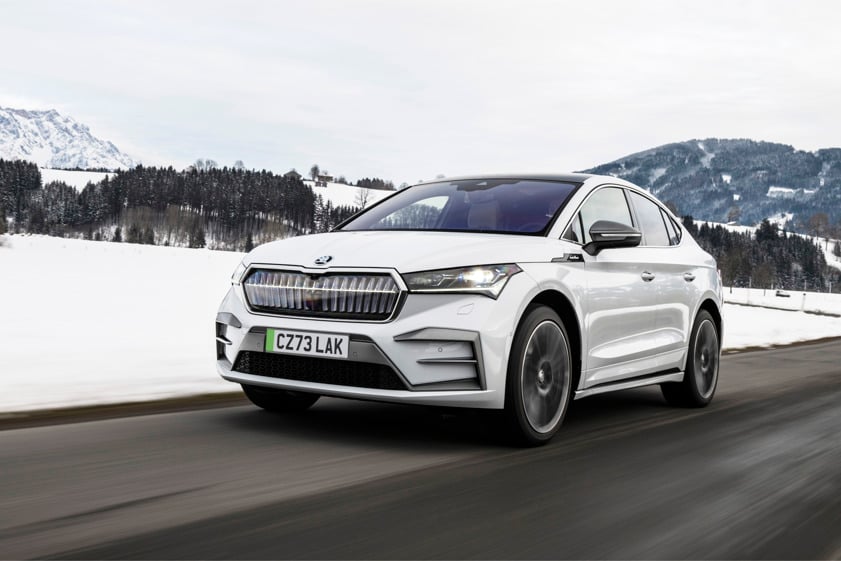
Imagine how good it would be if your electric car could charge while on the move. It sounds futuristic, but believe it or not, it’s a question that’s coming up more and more.
With electric cars surging in popularity across the UK, it’s no surprise drivers are curious about what's possible now, and furthermore, what might be just around the corner.
From clever technologies like regenerative braking to futuristic concepts such as inductive charging, there’s plenty to get the cogs turning.
In this blog, we’ll explore whether electric cars can really charge on the go and offer some expert insight into the exciting developments ahead. Plus, we’ll look at how leasing an EV could be your smartest move if you want to stay ahead of the curve. We discuss:
Let’s start with the short answer: not in the way you’re thinking.
As of writing this, electric cars can’t charge their batteries while driving in any meaningful or continuous way. EVs rely on stored energy from a battery that must be charged up before you hit the road.
Once you’re on the move, that energy is gradually used up as the vehicle powers the motor, climate control, and more.
But this doesn’t render EVs completely useless when it comes to topping themselves up. While they don’t have alternators like normal cars, they do have systems that can recover small amounts of energy as you drive. Think regenerative braking (more on this below).
The idea of charging while driving is being explored through tech like inductive roads, but we’re not there yet. For now, most of what we consider as charging on the road is better described as ‘energy recovery’.
Looking to drive an EV?
Nationwide Vehicle Contracts is one of the UK’s largest car leasing brokers, offering a range of EV lease deals to suit your every need. For more, check out our latest electric deals or call us on 0345 811 9595, and we’ll be happy to help.
Electric cars don’t necessarily charge while driving, they ‘recover’ energy that is used through a technology known as regenerative braking.
Regenerative braking is a system that captures energy that’s normally lost when a vehicle slows down. In a regular car, hitting the brakes generates energy that is simply lost. But in an EV, letting off the accelerator or applying the brake sends that kinetic energy back to the battery.
It’s nowhere near enough to fully charge the battery, but over the course of a drive (especially if there’s lots of stop-start traffic), regenerative braking can help top up your battery and range.
“Regenerative braking is one of the most underrated aspects of electric driving. It’s a smart way to stretch your range, especially in urban environments.”

While today's EVs can’t fully charge themselves on the go, engineers are working hard to change that. There are several innovative technologies under development to enable charging while driving:
- Dynamic wireless charging - This method uses inductive charging, where a magnetic field generated by coils in the road transfers electricity to a receiver on the EV. As the vehicle drives over the coils, an electric current is created wirelessly and charges the car.
- Conductive charging - This involves a direct electrical connection between the car and a charging rail or plate in the road. It’s one of the more efficient methods, but it presents serious logistical problems. In the UK, we struggle to fix a simple pothole, let alone install charging plates in our roads!
- Overhead electrification - Borrowed from electric rail and tram systems, this delivers power via overhead wires connected to the vehicle. It’s most suitable for commercial transport on fixed routes.
- Solar-powered EVs - This one is relatively logical. A solar panel is built into the car and as you drive along, it charges purely from sunlight. This technology is currently being explored but is not yet ready for mass adoption (and it’s quite expensive).
The real obstacle standing in the way of these technologies is the challenge of energy efficiency. For any EV to top up its battery while on the move, the energy going in has to outweigh the energy going out.
Take regenerative braking, for example. It captures a small amount of energy when slowing down, but not enough to sustain long-distance driving. The same goes for onboard solar panels. They might give you an extra few miles, but they’re nowhere near powerful enough to fully charge a car.
While dynamic wireless charging and conductive charging may be able to do this, the cost and complexity of the technology make it almost impossible to become a reality.
Until realistic technology becomes more efficient (and cost-effective), most drivers will still be relying on traditional home chargers and the public charging network.
The prospect of charging electric cars is a real possibility. Technologies like solar-powered EVs and inductive charging are already being trialled, and the potential is massive.
But while progress is exciting, we’re still some way from seeing it rolled out on a large scale. Standardisation is an issue thanks to so many EV models and brands on the market, and the cost of building the infrastructure is simply frightening.
Still, as trials continue and technology improves, the possibility of a self-charging drive is edging closer.
So, are electric cars capable of charging while driving? Not fully. Technologies like regenerative braking can top up our batteries and electric range while we drive, but they don’t provide enough for the vehicle to be self-sustainable.
For now, the dream of wirelessly charging on the motorway is still a long way down the road.
That said, if you’re curious about EVs but worried about keeping up with the latest tech, leasing is a smart move. It gives you the flexibility to upgrade as new models roll out, so you can stay ahead of the curve without being tied to a vehicle because of ownership.
We’re one of the UK’s largest car leasing brokers, offering a range of electric vehicles to suit every lifestyle.
Originally posted: 8th February 2024
Last updated: 17th June 2025
Due to be reviewed: 17th June 2026

